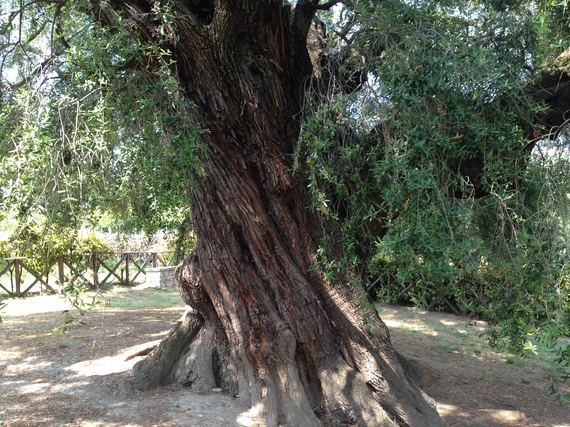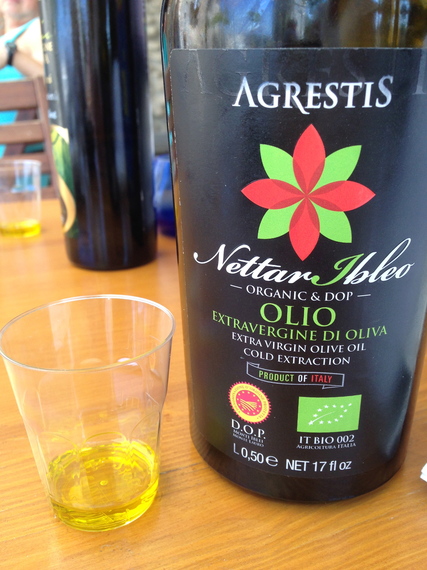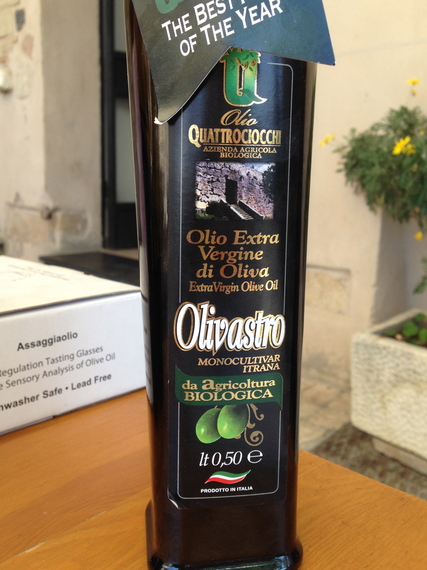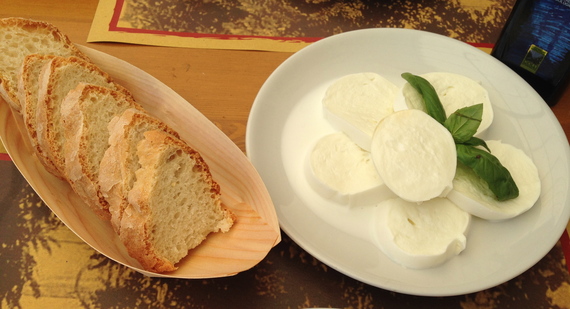
Both the health benefits of olive oil and the scandals about fraudulent labeling have been widely publicized. I wanted to know how to recognize and buy "real" oil.
Johnny Madge, an international olive oil expert, who lives between Rome and a tiny, medieval hill town north of the city called Casperia, shared his advice and wisdom with me during a day-long lesson.
1) Learn to Taste Oil and Recognize Defects Yourself
"Extra Virgin", the highest grade of oil, means the oil has no defect. "Virgin" means the oil has a slight defect. Everything else is "Lampante", oil not fit for human consumption (but a large % of what is sold as Extra Virgin is actually Lampante that has been deodorized or otherwise changed to cover defects). In this video, Johnny explains how to taste oil.
Bitterness or "pepperyness" is a sign of quality. It indicates high levels of polyphenols, which carry the health benefits associated with oil.
Common defects are: rancid (Chlorophyl has oxidized.), fusty (Olives have begun to ferment--swampy smell.), mustiness (a moldy or musty scent), winey (a wine or vinegar scent or flavor).
2) Learn to Read Labels
A few label tips. (For more check out "Resources" below.)
-Only buy Extra Virgin. Even though Extra Virgin Oil may be mislabeled, start there.
-Look for "DOP" certification (indicating that the olives were grown in a specific location in Italy and that the oil was made in Italy).
-Avoid oils that say "Bottled in Italy" or "Imported from Italy"which are usually code for oil brought from elsewhere and only packaged in Italy. Loose laws and enforcement mean that low grade oil from outside of Italy is bottled in Italy and labeled as Italian.
-Look for "Organic" (in Italian, "Biologico") or "Demeter", the designation for biodynamic agriculture . They are often an indicator of quality.
-Look for a harvest date. Unlike wine, oil doesn't improve with age. It spoils (usually goes rancid) and loses flavor and freshness. Best within two years of the harvest.

3) Look for Oils Made With One Specific Variety (Cultivar)
There are 628 varieties of olives in Italy. Varieties of olives are similar to grape varieties in oil in that they largely determine the flavor of the oil. "Taggiasca" olives from the Ligurian coast of Italy yield a mild oil. "Tonda Iblea" from Sicily, a more tomato-ey, slightly spicy oil. "Coratina" from Puglia with lots of pepperiness. Or this oil from the variety (cultivar in Italian) "Itrana" from the Lazio region that in Johnny's words, "...tastes like summer. Very seductive."
Single cultivar oils are less likely to be adulterated.

4) Use Single Variety/Cultivar Oils to Transform Simple Food into Delicacies
Experiment with pairing oil the way you pair wine with food. Use mild oils for simpler foods and spicier ones for heartier dishes. Or, use a peppery oil to "spice up" simple foods.

5) Beware of Bargain Prices. Be a Conscious Consumer.
If the price seems too good to be true, it probably is. To grow and harvest olives in the traditional, artisanal way, paying decent wages is expensive. To ship oil from Italy is also expensive. Italian oil that costs less than $20/liter (1 liter=33.8 fl. oz.) probably isn't the real thing.
Buying "real" oil is a way of supporting and protecting the culture of high quality, family olive growing in Italy. Industrial production, mislabeling of low quality oil and ferocious price competition is putting many small, artisan producers out of business.
Resources:
Extra Virginity: The Sublime and the Scandalous World of Olive Oil by Tom Mueller
"Slippery Business: the Trade in Adulterated Olive Oil" The New Yorker, Aug. 13, 2007 by Tom Mueller
Truth in Olive Oil
Made in the South of Italy
The Extra Virgin Alliance
Johnny Madge
-- This feed and its contents are the property of The Huffington Post, and use is subject to our terms. It may be used for personal consumption, but may not be distributed on a website.
No comments:
Post a Comment